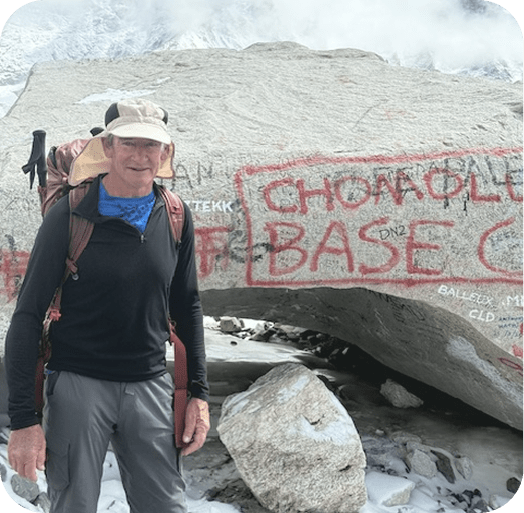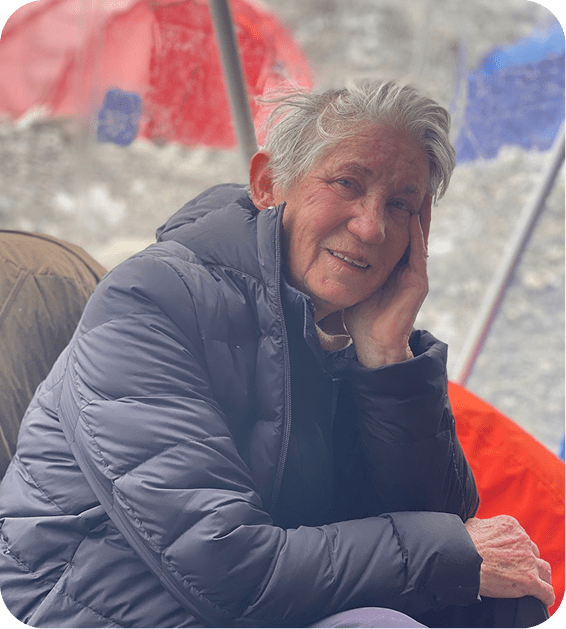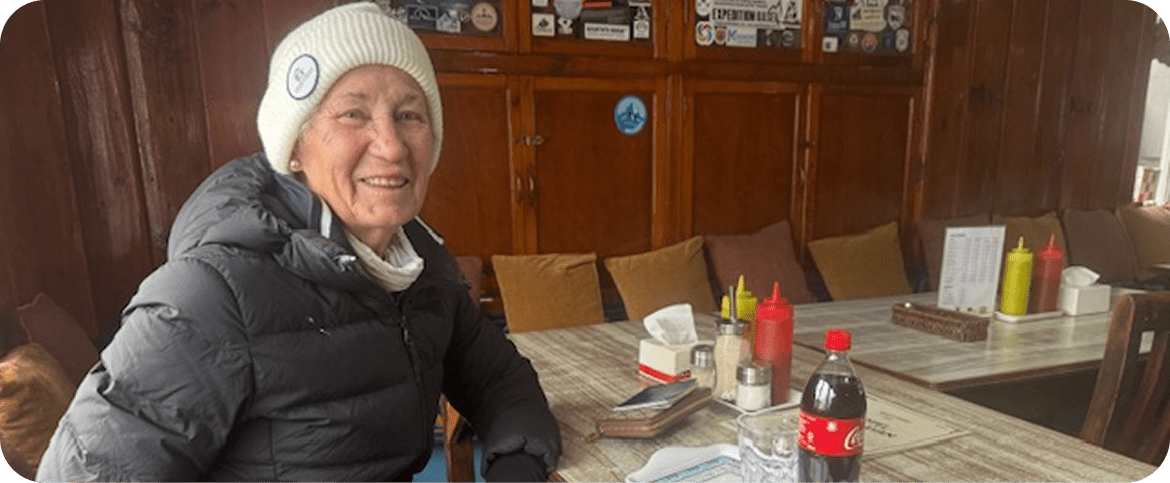We’ve been sold a story about ageing—that it’s a slow fade. A winding down, a chapter of limitation. But what if that story is wrong? What if some of the most courageous, fulfilling, and purpose-driven moments of our lives are still waiting for us well into our sixties, seventies, and eighties?
That’s not just wishful thinking: It’s the lived reality of a group of remarkable Australian Rotary members, who are quietly defying the odds by trekking to support the eradication of polio.

Their latest mission? Everest Base Camp.
Led by Ken Hutt, 65, their adventure proves that getting older doesn’t have to mean slowing down—it can mean stepping into something even bigger than yourself.
‘Just because you’ve retired, or turned 60 or 65, it doesn’t mean it’s time to stop,’ says Ken, a lifelong adventurer and former emergency responder. ‘You do what’s in your comfort zone, and you can surprise yourself.’
Ken began mountaineering in the 1990s and has scaled mountains across the globe. But in 2014, his adventures took on new meaning when he began fundraising for polio eradication through Rotary International. What started as a personal challenge—to climb and paraglide from remote peaks—quickly evolved into a mission with global impact.
For Ken, ageing has brought a powerful mindset shift.
‘Twenty years ago, it was about what I could achieve for myself. Now, it’s about whether what I’m doing makes a difference to someone else.’
That difference is profound. By taking groups of older Australians to Everest Base Camp, many of whom never dreamed they could do such a thing, Ken is creating a ripple effect of possibility beyond ageing.
Carolyn Robinson, 80, was among the trekkers. Carolyn is a spirited grandmother and member of Berry Rotary, who, until recently, never thought she’d take on a trekking challenge. Now, she’s the oldest woman to have ever reached Mount Everest Base Camp.
‘I’m not an adrenaline junkie. And I’m not an adventure seeker. My holidays consist of golfing trips and walking around a golf course. That’s the most energetic I normally get,’ she says.
But something changed in her when Ken mentioned his fundraising trek to Everest Base Camp.

‘I just thought, well, that’s a country I haven’t seen,’ Carolyn says. ‘I looked it up on YouTube, and I thought, “I can do that.”’
Because of her age, Carolyn couldn’t train intensely—but that turned out to be a blessing in disguise. A slower trekking pace leaves room for better acclimatisation to altitude, which is something many younger hikers struggle with.
Carolyn could only move slowly, with her trusted sherpa Lamu beside her every step of the way.
‘I was always about a day behind [the rest of the group], but because I was going slowly, I was actually acclimatising to the altitude,’ Carolyn explains.
In a world that emphasises speed, Carolyn’s experience is a subtle reminder that faster isn’t always better. In fact, slowing down can often be the wiser choice.
Even so, she experienced moments of extreme challenge.
‘I never doubted that I could do it, but I did think at times, “Why am I doing this? This is so hard,”’ she recalls. ‘But I think that was an incentive for me to just keep going.’
Between avoiding yaks and donkeys, and the fiercely steep steps up to the Edmund Hillary Bridge, Carolyn found solace in her breath.
‘I had to stop and rest, and I had to take breaths. I’d take a step, breathe, step, breathe. And that’s how
I did it,’ she explains. ‘But I put one foot in front of the other. That’s all it is. That’s life.’
Carolyn credits her determination to faith, family, and the encouragement of her fellow trekkers. And during challenging moments, she’d reach into her pocket and feel a small card a friend had given her, quoting Psalm 40: He set my feet on solid ground and steadied me as I walked along.
It’s this inner steadiness—not her age—that defines her journey. When asked what advice she had for other older folk who think they’re past their prime, Carolyn says it’s all in the mind.
‘You’re never too old. You are never too old. Just say your prayers and think: I can do this. I can do this. Just keep telling yourself, I can do this. It’s not impossible when it’s done,’ she says.
Ken agrees that it’s about breaking down the barriers in your mind.
‘Try and change your view of the world. Try and change your attitude to why you’re doing it. Don’t let an injury or being uncomfortable be a stopper to everything,’ he says. ‘Even if it’s the worst-case scenario, and you’re in a wheelchair, get down the street and go and say hello to people.’
People like Ken and Carolyn aren’t just ageing well—they’re ageing boldly. Their lives are a testament to the fact that purpose, movement, and connection help us thrive, even in our later years.
For Carolyn, ageing well means waking up the next day.

‘It means having something to look forward to. I’ve got a beautiful family, and I live for them. But I also live for what’s next.’
Ken echoes her sentiment.
‘Eventually, sure, I’ll sit in a rocking chair with a blanket and slippers on. But I want to be able to look at my photo album and say: “I did that. I made a difference. I helped get an 80-year-old to Everest. I helped eradicate polio.” That’s the legacy I want to leave,’ he says.
At the end of the day, perhaps ageing “well” has nothing to do with what we spend our time doing. Maybe it’s about being exactly who we want to be, and defying the odds of our own limitations.





